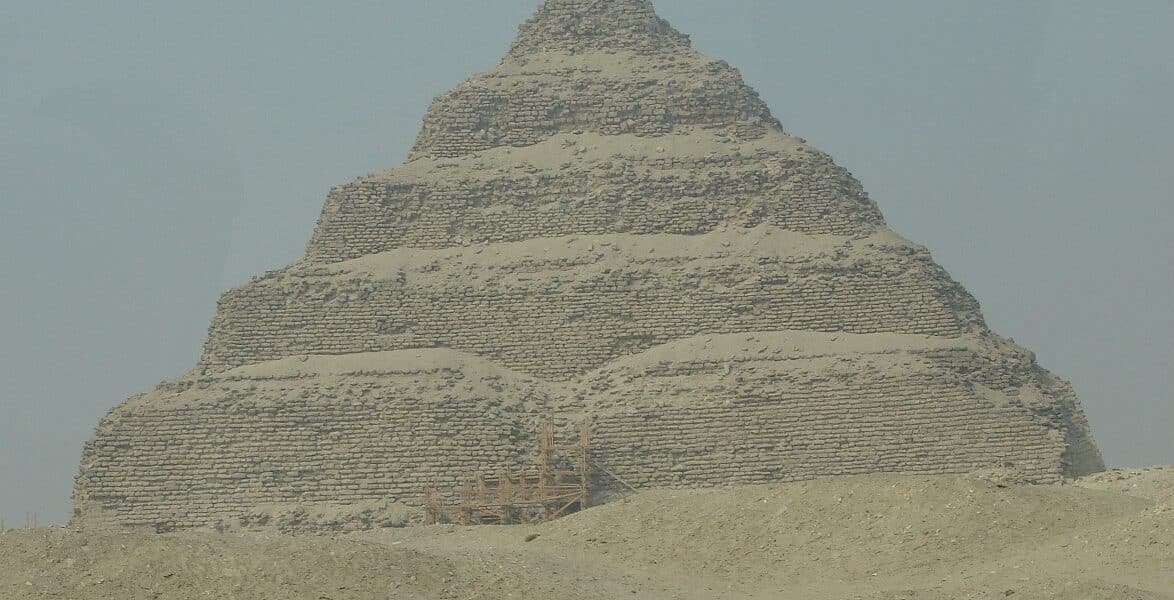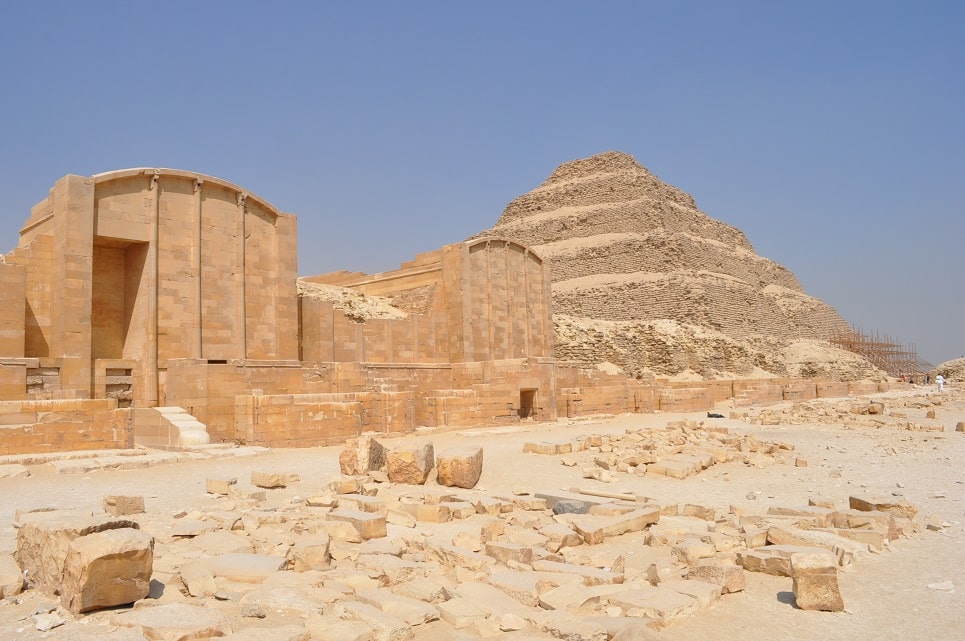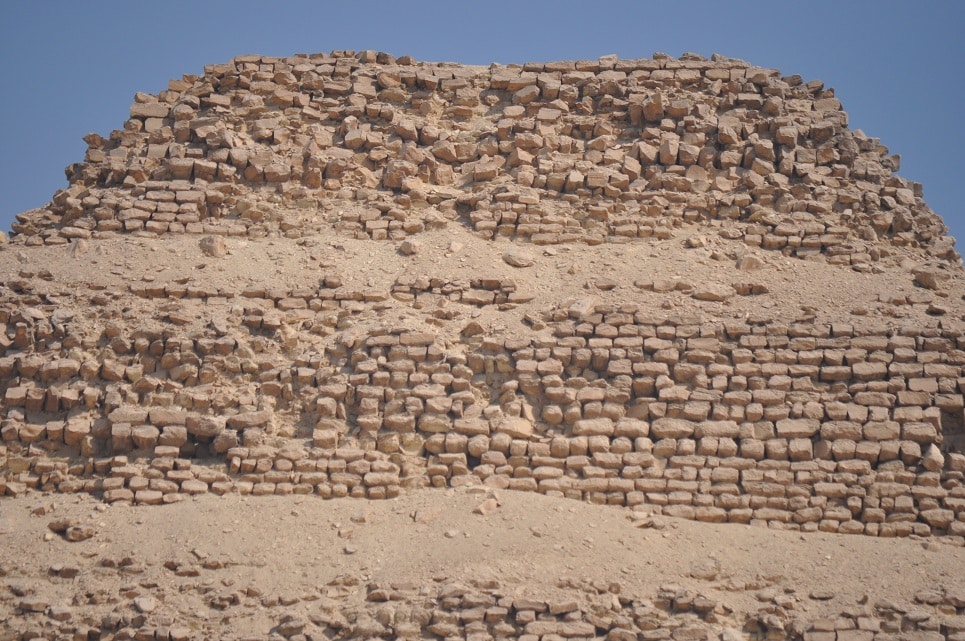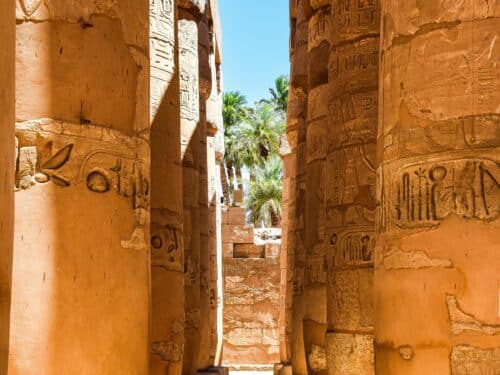

Explore Saqqara, the vast royal necropolis near Cairo. Discover the Step Pyramid of Djoser, colorful Mastaba tombs, and recent groundbreaking discoveries. Trace the origins of Egyptian architecture with My Egypt Travel.
🧱 Saqqara: The Evolutionary Leap of Ancient Egypt
While Giza captures the world’s imagination with its towering perfection, Saqqara holds the profound truth of Egyptian civilization: it is where the very idea of monumental architecture was born. Located just 30 kilometers south of Cairo, Saqqara served as the primary burial ground for the city of Memphis, Egypt’s ancient capital. It is a sprawling, silent necropolis that spans the entire dynastic period.
For the American and European traveler seeking depth beyond the icons, Saqqara is an essential destination. This non-conventional guide, brought to you by My Egypt Travel, explores Saqqara not just as a collection of ruins, but as an architectural laboratory where the Old Kingdom perfected the transition from simple mud-brick tombs to eternal stone structures.
Imhotep’s Vision: A Non-Conventional Perspective
The true hero of Saqqara is Imhotep, the architect, physician, and polymath who masterminded the Step Pyramid complex. Before Imhotep, structures were built of perishable materials. His genius in using stacked stone layers revolutionized history. Our tours focus on understanding this leap, allowing you to walk through the very corridors where monumental building began.
I. The Origin Story: The Djoser Complex

The centerpiece of Saqqara, and indeed the focal point of early Egyptian history, is the Step Pyramid Complex.
1. The Step Pyramid of Djoser (The First Monument)
Dating to the 27th century BCE (Third Dynasty), the Step Pyramid of Djoser is the world’s oldest massive stone structure still standing. It was designed as a series of stacked mastabas (benches), an architectural progression from the flat-topped tombs of the earlier dynasties.
- Architectural Significance: The sheer scale and multi-layered design established the template for all pyramids that followed, including those at Giza. It represents the pharaoh’s power growing so vast that he required a symbolic staircase to the heavens.
2. The Enclosure Wall and Heb-Sed Court
The Step Pyramid was enclosed by a massive limestone wall, containing an elaborate funerary complex. The Heb-Sed Court within the complex was designed to host the Pharaoh’s renewal festival, ensuring his vitality in the afterlife.
- Traveler Insight: Walking through the meticulously reconstructed Entrance Colonnade, with its bundled columns mimicking reeds, gives a tangible sense of the artistry and scale of the site’s original grandeur.
II. The Mastaba Legacy: Art and Daily Life
While the Pyramids housed kings, the surrounding Mastaba Tombs of the nobility and high officials offer the most intimate, colorful look into the life of the Old Kingdom.
3. The Mastaba of Ti (The Colorful Chronicle)
The Mastaba of Ti is famous for its extraordinarily well-preserved wall reliefs. The scenes depict vibrant details of daily life—cattle fording a river, hunting in the marshes, metalworking, and farming.
- The Artistic Difference: Unlike the royal tombs, which focus on religious texts for the afterlife, the noble tombs emphasize the prosperity and earthly status of the deceased, making them incredibly accessible and engaging for modern visitors.
4. The Mastaba of Mereruka (The Largest Non-Royal Tomb)
This tomb, belonging to a Vizier of the Sixth Dynasty, is the largest mastaba in Saqqara, featuring 33 chambers. The level of detail and artistic quality here is exceptional, rivaling even the royal complexes.
III. The Pyramid Texts and Later Dynasties
Saqqara’s history didn’t end with Djoser; it continued to serve as a necropolis for the succeeding dynasties, giving us the earliest known religious writings.
5. The Pyramid of Unas (The First Sacred Texts)

The small Pyramid of Unas (Fifth Dynasty) holds immense historical value because its burial chamber walls are covered with the Pyramid Texts—the oldest known continuous religious writings in the world.
- Thematic Importance: Reading these texts (or having our guide interpret them) is like finding the first chapter of the Egyptian spiritual beliefs, predating the later Book of the Dead.
6. The Pyramid of Teti

Another Fifth Dynasty structure, the Pyramid of Teti is renowned for having some of the finest examples of the Pyramid Texts carved into its walls, offering a deep, atmospheric dive into the theology of the time.
IV. The Modern Renaissance: Groundbreaking Discoveries
Saqqara is not just about ancient history; it is actively shaping the news of tomorrow. Recent archaeological missions have made global headlines, confirming Saqqara’s status as a site of limitless potential.
7. The Cache of Colored Coffins
In recent years, massive caches of brightly painted, sealed sarcophagi—many containing well-preserved mummies—have been unearthed. These discoveries highlight Saqqara’s use as a burial site well into the Late Period and Roman times.
- The Allure: The sheer number and colorful preservation of these coffins, many now displayed in the new museums, provide a tangible, immediate connection to ancient Egyptian funeral art.
8. The Tomb of Wahtye
The discovery of the tomb of Wahtye, a high priest, was heralded for its pristine condition and vibrant statuary, capturing the public’s imagination and proving that vast, intact secrets still lie beneath Saqqara’s sands.
- My Egypt Travel Insight: Our itineraries are constantly updated to reflect the latest excavation news, ensuring our travelers see the most relevant and exciting discoveries.
V. Planning Your Immersive Saqqara Expedition with My Egypt Travel
Saqqara’s sprawling size and dispersed sites require expert navigation and planning for maximum appreciation.
Logistics for the Discerning Traveler
- Connecting the Sites: Saqqara is best combined with the nearby ancient capital of Memphis and the “failure-to-success” pyramids of Dahshur to provide a complete chronological overview of pyramid building. My Egypt Travel structures this as a perfect “Pyramids Origin Day” tour.
- Photography and Light: The flat, arid landscape of Saqqara is best photographed in the morning light, which accentuates the layered structure of the Step Pyramid.
The Non-Conventional Advantage
We ensure your Saqqara experience delves deep into the non-royal tombs, providing you access to the most visually stunning and historically informative reliefs that illustrate the rich culture of the Old Kingdom.
- Comfort and Pace: We prioritize comfort in our transfers between sites, allowing you to absorb the history without the physical strain, ideal for senior-friendly tours. Our private Egyptologists bring the complex evolution of the burial complexes to life, making the archaeology accessible and engaging.
🔑 Conclusion: Unearthing the Foundation of Egypt
Saqqara is the foundation upon which Egypt’s grandeur was built. It is the destination that reveals the creative genius of Imhotep, the colorful life of the nobles, and the earliest written prayers of the pharaohs. Visiting Saqqara is to witness the moment human civilization decided to build for eternity.
Are you ready to explore the birthplace of the Pyramids and unlock the oldest secrets of Egypt? Let My Egypt Travel guide your profound journey through Saqqara.




